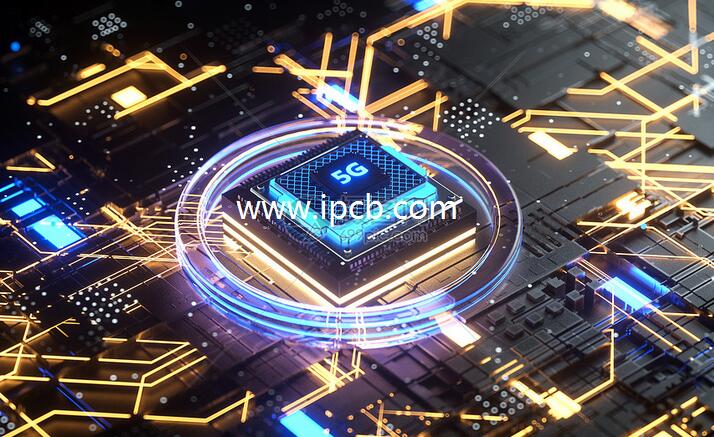The economic output value under the 5G trend will reach 100 billion US dollars, which will drive the future growth of the PCB and FPC industries.
5G, as the main direction of development for the new generation of mobile communication technology, will become an important driving force for promoting national economic and social development, as well as industrial transformation and upgrading.
The Party Central Committee and the State Council attach great importance to the development of 5G and have clearly put forward the requirements for accelerating the development of 5G in China. The 13th Five Year Plan points out that we should actively promote the development of 5G. China has also made relevant deployments for 5G technology research and development, standards, and industrial layout in documents such as the launch of 5G business in 2025, the National Information Technology Development Strategy Outline, and the 13th Five Year Plan for the information and communication industry.

5G PCB
Compared with 4G technology, 5G networks have stronger performance and support application scenarios of ultra-high speed, ultra-low latency, and ultra large connections. In the past two years, the growth rate of smartphones, personal computers, and tablets has generally slowed down, and the driving force of consumer electronics products on the PCB market has weakened, leading to a decline in PCB board. The application of 5G will greatly promote the future growth of the PCB industry.
From the above layout, it can be seen that China is formulating the world standard of 5G, leading the trend of interconnection, and mastering the core leading technology of 5G, which will ensure that China is in a leading position in the field of world communication technology. At least for the next decade. This will also provide superior geographical advantages for China's PCB industry to win the world market and exchange advanced technologies.
5G will bring billions of times the value growth to China's PCB industry. China's digital development will be easier and more investment will be made in the Internet industry, thus stimulating data consumption and improving national competitiveness. By 2030, 5G related industries will create approximately 2.9 trillion yuan in economic added value and 8 million job opportunities. The world is currently in a critical period of formulating 5G standards. 5G applications require the government to build Internet infrastructure and create a better business environment.
According to Wenku, Director of the Communication Development Department of the Ministry of Industry and Information Technology, "After the second phase of technical testing, China's 5G is basically equivalent to graduating from primary school and will soon enter middle school. The next focus is on the technical testing and commercial use stage, which is an important stage for the 18-year-old adult stage in China." It is reported that in September 2017, China began drafting the test specifications for the third phase of testing and has started building a 5G testing environment. The transmission project was completed by the end of 2017, the testing environment construction was completed in March 2018, and the third phase of testing began in the first quarter of 2018.
Wide market demand, FPC output value continues to grow
(1) Since 2008, the market for consumer mobile electronic products such as smartphones and tablets has grown rapidly, greatly promoting the development of the FPC industry. At the same time, automotive automation, networking, and electrification have also expanded the demand for on-board FPC. In addition, in recent years, the consumer electronics market such as new wearable smart devices and drones has also brought new growth opportunities for FPC.
(2) The rapid development of downstream electronic products has brought sustained demand to the FPC industry. Therefore, since 2008, the global FPC output value has continued to grow steadily. As of 2016, the global FPC output value has achieved a compound growth rate of 6.5%, accounting for over 20% of the PCB industry. According to Prismark, it is expected that the annual production of FPC will exceed 12.5 billion US dollars in 2021 and is expected to rise to 21% of PCB production.
(3) Meanwhile, Presmark expects that smartphones will still account for the largest proportion of FPC production, while the proportion of tablets and laptops will decrease, and the proportion of other consumer electronics products (mainly wearable devices) will significantly increase.
(4) Under the influence of the eastward shift of the FPC industry, China has become the fastest-growing FPC market in the world. In 2016, the output value of FPC in China reached 35.4 billion yuan, accounting for 50% of the global market share.
(5) Downstream terminal product innovation opens up new demand for FPC.
Consumer mobile electronic products based on smartphones and wearable devices will continue to develop towards miniaturization and lightweighting, as well as the development of automotive automation, networking, and electrification, which will create new demand growth points for the FPC industry.
Innovative smartphone features push the use of FPC to a new level
(1) Smartphones have gradually become a rigid demand in people's daily lives, and the upgrading of feature phones has been basically completed. In 2016, the penetration rate of smartphones increased by over 1.47 billion units, but the shipment volume of smartphones decreased by over 1.47 billion units. However, the growth rate of smartphone shipments in China is higher than the global market, with a smartphone penetration rate of over 90%. In the future, the incremental factors of smartphones will come from trade in and innovative features to attract users to replace their phones.
(2) The impact of FPC boards used by Apple has led to mainstream smartphone boards with 10 × 15 chips, effectively promoting the demand for FPC boards. The emergence of new features continues to expand the application of FPC in smartphones, fingerprint recognition continues to penetrate, and integrated screens, facial recognition testers, wireless charging, and flexible OLED screen carriers are rapidly developing. These technological innovations continuously stimulate the comprehensive upgrading of the mobile phone related supply chain, indirectly driving the demand for FPC boards and technological upgrades.